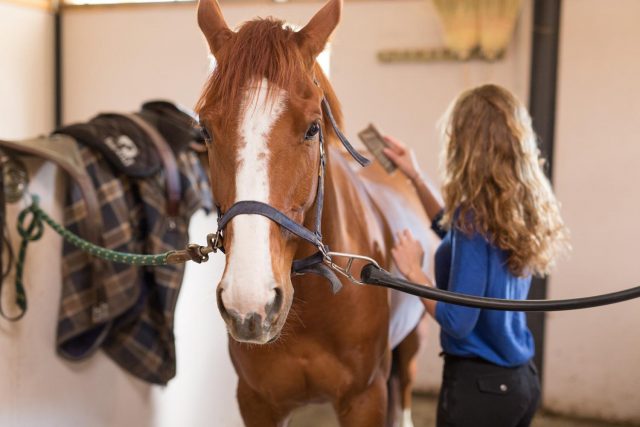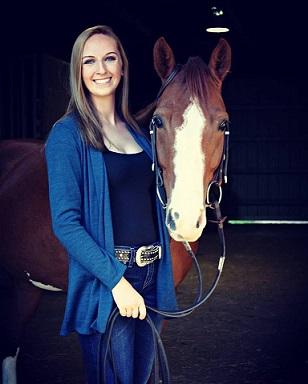
‘But I Thought My Insurance Covered That!’
Insurance: not that much fun to talk about, but absolutely critical in this day and age in the horse world. Claire Trafton teams up with Holly Lopes from Cheval Insurance Services to give us the scoop.
Insurance can be an unsexy topic, so understanding your insurance policy can be a turnoff. However, you will quickly realize ghosting your policy was a bad call when you find yourself filing a claim and saying, “but I thought my insurance covered that!?”
Holly Lopes from Cheval Insurance Services helped give me the run-down in understanding insurance policy basics for equine professionals and horse owners!
Do I Need Insurance?
First of all – there are no stupid questions when it comes to insurance.
Start here – What would make you financially devastated if you had a loss? House fire? Your horse colics or founders? A lawsuit for an incident at your farm or caused by your horse?
Figuring out what you have to protect is your first step. Finding out how to protect it comes next. A sound risk management program includes insurance after you have done everything else you can to minimize the chances of loss.
Now ask: “But what kind of insurance do I need and how much?” It depends on what you are doing. “If you can afford to pay for a major loss or incident out of your pocket, you don’t need insurance,” Holly informed.
Still not sure? There are a lot of ins and outs to insurance and everyone’s needs are different. Educating yourself and getting guidance from an experienced agent is your best bet to getting on the right track.
Let’s get into the nitty gritty of insurance policies…. yay!
Declaration? Like the Declaration of Independence?
No, not quite. All insurance policies are broken up into four main parts: declarations, conditions, exclusions, and endorsements.
The declarations of your policy are the pages where the carrier types in the information specific to you – name, address, particular things they are insuring for you like horses, buildings, locations, etc.
That seems simple enough!
Keeping You and Your Horse in Mint Condition
The conditions of your policy form the backbone – you agree to pay a set price to the insurance carrier and they agree to pay for your losses under a specific set of circumstances. This document spells out those circumstances.
Common circumstances on a property policy include fire, lightning, windstorm, theft and vandalism.
On liability policies, it will tie back to the declarations which shows in what operations you are engaged– e.g. boarding stables, riding lessons, and personal horses.
Any term in bold or “quotation marks” is defined in the conditions. That is the only definition you get no matter what you may think — so read those first. Look for what “You” are responsible for and what “We” (the insurer) are responsible for.
Well… Then You Have to Keep Reading…
Then there are exclusions – these take away some of the coverages given by the conditions, but not all. The carrier uses these to tailor your policy to your horse or your operations.
Exclusions that will exist on every policy include Nuclear Hazards and War. On property policies, earthquake and flood are typical exclusions for which you would need a separate policy.
Look for anything you definitely wanted covered that they decided not to include. An example on a horse mortality policy is a pre-existing condition, especially when there is no remedy. If your horse was already diagnosed with arthritis in his right front foot, they will exclude arthritis in the right front foot.
Game of Endorsements
And finally, the endorsements can give back some of what the exclusions take away or clarify things that are actually going to be covered. On a horse mortality policy with medical, there may be a sublimit for lameness charges and claims.
“Have you actually examined your policy to see if you are truly covered for that loss? What are the exclusions or endorsements that may apply to limit or redefine your recovery? These are questions you should be asking yourself as you read your policy,” says Holly.
Pre-Existing Conditions on Horses
Just like human health insurance, pre-existing conditions can affect what kind of coverage you can get on your horses. Look at it this way: insurance companies do not want to insure for what has already happened, they are looking to insure what has yet to happen. Case in point, if your horse has had a chronic and degenerative condition, that condition will likely be excluded on a policy.
“Age is another factor” says Holly. “The idea of horse mortality insurance is to pay you back your investment if your horse dies prematurely. As a horse gets older, that prematurity aspect starts to go away, so rates may get higher or you lose certain coverages.”
Ask up front about possible exclusions or limitations on any policy. Then when you get it, double check your policy!
Which Coverages Are Right for You?
This is not as hard as you may think! It comes back to “can you sustain the loss out of pocket?” Insurance is a tool where you pay a small sum of money for someone else to run the risk of having to pay out a much larger sum.
“But be aware, insurance policies are not annuities,” Holly states. “They start again at each renewal no matter how many renewals you have had with a single carrier.”
On insuring horses, one point Holly made is colic may be expensive (and is a popular choice for insurance), but lameness is WAY more common. How many times have you gone to the barn to get your horse out for a ride to discover he’s lame?
Did you know there are horse insurance endorsements that help cover diagnostics and treatment of lameness issues among other things? Insurance may help cover MRIs, X rays, nerve blocks, and more to help discover the source of your horse’s lameness and help cover treatment. This is called a Major Medical endorsement.
A horse’s value should not be your only consideration when choosing to insure it or not. It seems obvious that a high dollar horse should be insured, because you have invested a lot of money into an unpredictable animal. Yet, if your horse is valued at under $10,000, you can still get mortality insurance with at least some medical coverage, which is a lot better than none. “There have been claims for medical issues that exhausted the entire medical coverage limit, then the horse still succumbed, and the company paid out the mortality also,” Holly points out.
The Basics
There are some types of insurance policies many people have heard of. Here’s a quick look at the most common ones for the horse industry (and Cheval Insurance can help you obtain them)!
Workers Compensation: In all states, Workers Compensation is required by law if you employ persons for a wage or salary. You may also have to carry Workers Comp insurance on independent contractors. “Workers Comp is designed to pay more than just medical bills related to an on-the-job injury or illness. It also pays a portion of lost wages, rehabilitation expenses, and when necessary, burial expenses” Holly informs. And all other policies (e.g. health, liability) will exclude on-the-job injuries or illness.
Personal Horse Owner’s Liability: If you own horses that are only for your personal show or pleasure use and not for commercial endeavors (such as lesson horses), you may obtain liability insurance to protect you in the event your horse causes bodily injury or property damage to someone else.
Horse Mortality: This coverage is designed to insure you for the fair market value of your horse in case it becomes deceased. It may include Major Medical, Surgical, Loss of Use (both full coverage and external trauma only for performance horses), Guaranteed Extension, Agreed Value, Stallion Infertility, Limited Perils Mortality, International Transit, and Emergency Colic Surgery Extension. Quotes are available right over the phone and vet checks are not required on most horses valued at $100,000 or less.
Commercial Equine Liability: This policy is designed to protect you from losses related to your commercial equine operations such as boarding, training and lessons. “We can insure most every commercial equine activity including stables, ranches, breeders, shows, and clinics. We also insure pony rides, horse drawn carriage rides, camps, guided trial rides, and more,” Holly explained.
Farm and Ranch: An insurance package that includes all your property and liability needs. Business Auto can also be added in most cases.
Fifty Shades of Insurance
Insurance is obviously complicated! To go deeper than the surface, Holly says, “start by talking to your agent. They should walk through a discussion of all aspects of your needs for your situation. The more information you can provide, the better you can be protected.” It’s important to ask questions as you go and to get all the details you need to make the right decisions and understand how you are covered under a policy.
A common misconception is trainers who think that they do not need Care, Custody and Control insurance because they do not operate the boarding facility where their business is based. “Anyone that is handling a horse for others has a care, custody and control exposure,” Holly clarifies. “‘Exposure’ is anywhere you have the potential to take a loss, including where you may have to pay damages to someone else.
Each person’s situation is specific, and you’ll want to make sure you never have to say, “but I thought my insurance covered that!?”
I had a great time talking to Holly! She answered all my questions and explained all the services that Cheval Insurance provides. To learn more about Cheval Insurance Services or to obtain quotes, visit www.chevalinsurance.com.
Claire Trafton is a junior consultant at Entrigue Consulting, a full-service equestrian marketing and brand agency. She has worked on multiple professional rider and equestrian brand accounts managing social media content creation and growth. Claire enjoys working with riders across all horse sports including dressage, jumpers and eventing, but in her spare time rides western from reining to pleasure. If you have any questions about social media, please contact Claire at claire@entrigueconsulting.com.












Leave a Comment